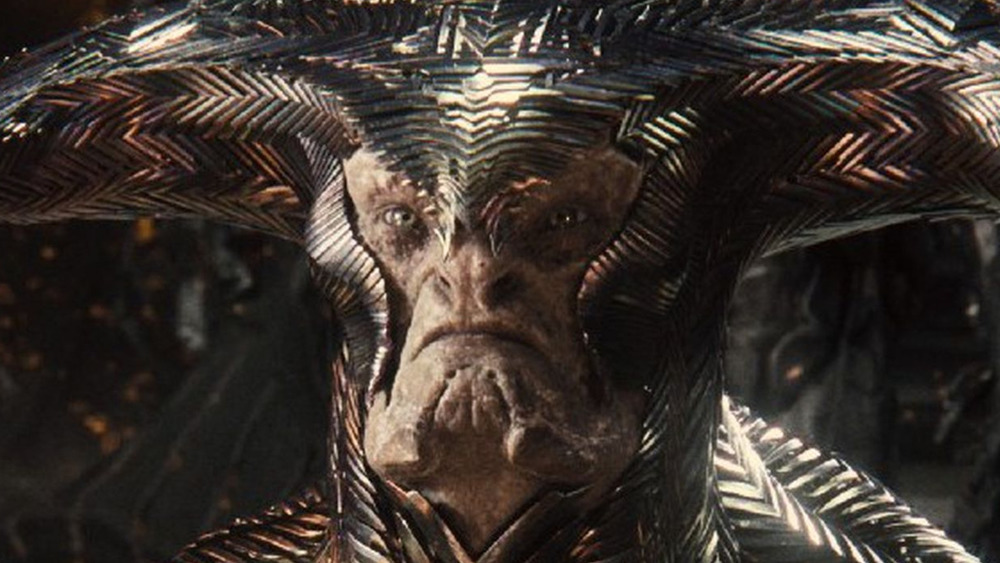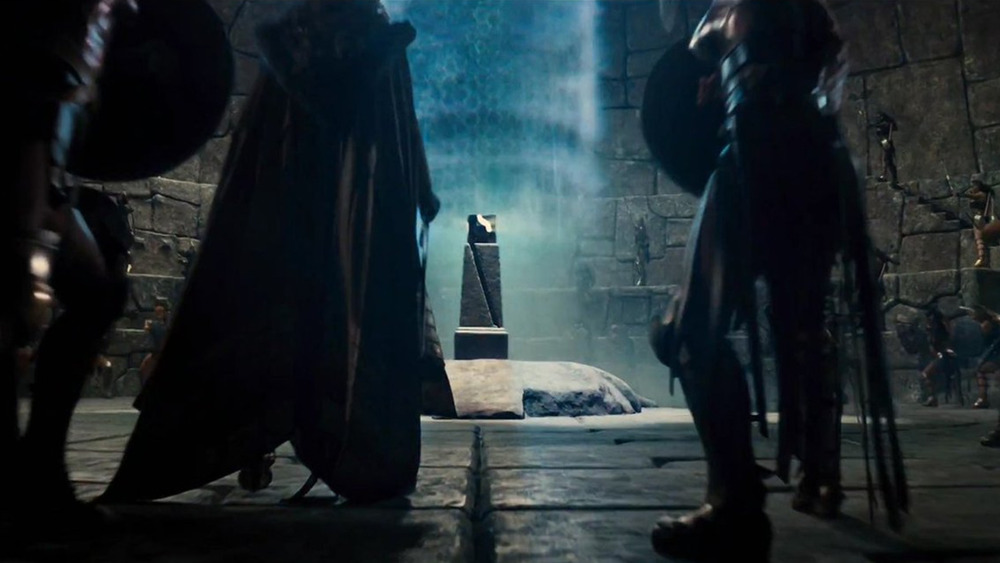How Does Steppenwolf Teleport In Zack Snyder's Justice League?
If you click a link and buy a product or service from a merchant, we may be paid an affiliate commission.
Zack Snyder's Justice League is upon us. After years of disappointment and fans yearning to see the true vision of the original Justice League director realized, it's finally arrived via HBO Max and the DC Extended Universe's fandom couldn't be more excited. The Snyder Cut, as it's colloquially known, is darker, grittier and less jokey than the 2017 Joss Whedon version that ultimately bombed at the box office, was plagued by controversy, and caused Warner Bros. to rethink its entire, overarching cinematic schema when it came to adapting DC Comics for the big screen.
As fans sit down with their tubs of popcorn, they may find themselves pondering a familiar question — one they may have asked when watching the 2017 cinematic cut of Justice League. How, exactly, does the film's primary antagonist, Steppenwolf, travel from place to place? It doesn't look like he or his parademons — who at least have the practical benefit of wings to help them get about — are taking advantage of any kind of inter-dimensional ride-sharing app. They seemingly pop up out of nowhere, with a cylindrical, tractor-beam-like field of light emanating down from above. That, dear fans, is what's known in DC Comics as a "Boom Tube."
What is a Boom Tube and how does it work in Justice League?
A Boom Tube is not unlike a wormhole, for all intents and purposes; it's a portal that operates under the same theoretical principles, allowing one to travel through space-time from one point in the universe to another, as if stepping through a door. If the key to that door happens to be a Mother Box, that is; perhaps "hinges" are more mechanically analogous in this situation, but "key" certainly makes for a tidier metaphor. Nevertheless, a Boom Tube is a means of instantaneous transport powered by advanced alien technology (space magic?), something fans have never, ever seen before in a film with comic book source material. Seriously, never.
Okay, now that we're thinking on it, sure, we've seen long-distance travel of a similar sort in the Marvel Cinematic Universe — in a couple of forms, actually. Perhaps the example that first springs to mind is that which is afforded by the Space Stone, one of the six Infinity Stones. In Avengers: Infinity War, we see Thanos step back and just disappear on more than one occasion, courtesy of the Space Stone he grabbed from Loki. He bamfs his way out of Knowhere after securing the Reality Stone-slash-Aether; he shuffles off of Titan after bargaining the Time Stone off of Doctor Strange; and he gets the hell out of Wakanda after plucking the Mind Stone from Vision's forehead.
In form and function, however, a Boom Tube — which is actually named for the onomatopoeia "boom" that occurs when one forms — seems more comparable to an Einstein-Rosen Bridge like we see Thor using to shuttle back and forth between Asgard and Midgard-slash-Earth. Or, used to, when Asgard was a planet and not just a people. Jokes aside, transport is initiated in the form of a shaft of energy that transports its passengers via a tunnel through space. Call it a wormhole, Boom Tube, Einstein-Rosen Bridge, whatever; as long as Joss Whedon didn't direct it.

